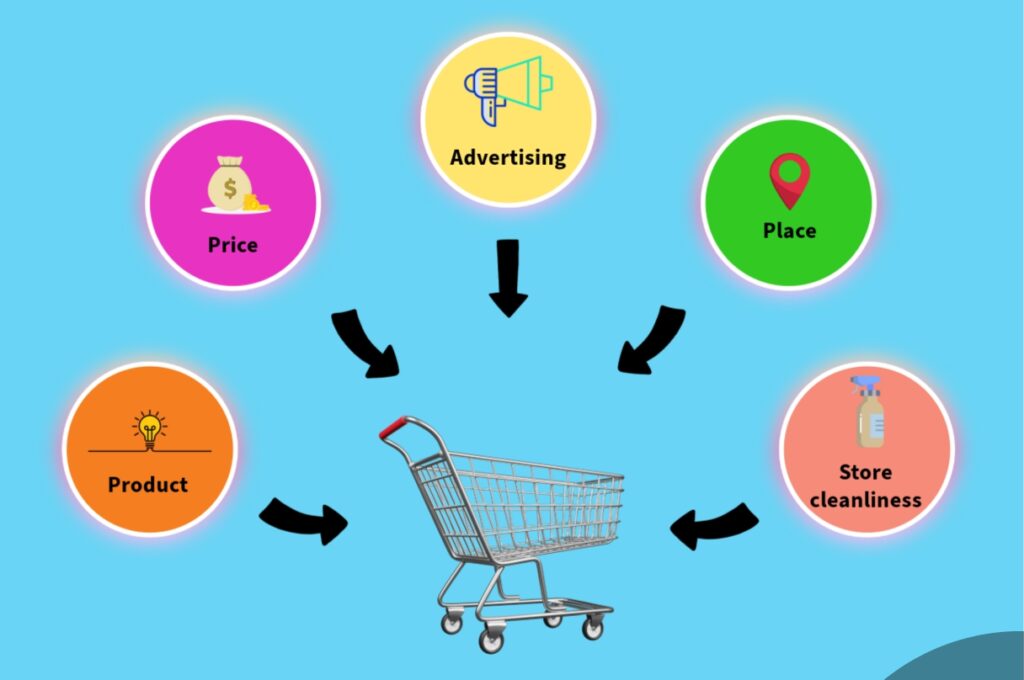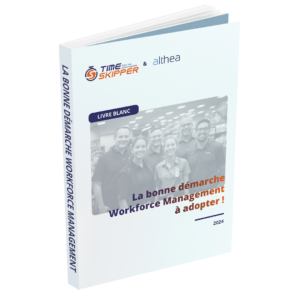Product, price, promotion and placement: these four main pillars of the marketing mix comprise the operational strategies aimed at bringing the company and its market together. With the customer experience at the heart of today’s concerns in supermarkets, cleanliness is an essential fifth driver for the point of sale. The Timeskipper activity management platform can provide a sustainable solution to the complex customer satisfaction vs. profitability equation. Here’s a demonstration.
1. Product
The product policy is at the heart of your offer and depends on your choices when it comes to a number of key factors: the brand and name of the product, whether it is to be launched or discontinued, its characteristics and style, its level of quality and improvements, the extent of its range and lines, its packaging, its functionalities and all the services and options associated with it.
What’s at stake? Simply to offer the right product references, in the right quantities, to avoid stock shortages and to be able to respond as effectively as possible to customer demand. Timeskipper can automatically produce a schedule. This gives you immediate visibility of the distribution of the workload for receiving parcels and putting goods on the shelves. Once these tasks have been completed, the remaining time can be allocated to analysing any shortages, making checks or performing any other product-related tasks, which is a necessary optimisation to maintain and increase your turnover.
2. Price
Aligning with the competition, setting a psychological threshold, capturing the market with unbeatable prices, or attracting a new category of customer with an exceptional price-product mix? What sales discounts and payment conditions should be put in place? Your pricing decisions influence more than just the sale price: they also position your brand in the
market and influence the choice of your target audience. The challenge is to constantly monitor the correlation between a shop’s price index and its catchment area so as to always be able to offer the right price, in the right place, at the right time.
The principle of the Timeskipper platform is to identify the hours available during the day so the store manager can use their team’s newly found free time to check prices outside the store, make sure prices in the shop match those from the head office, or verify that the right
labels are on the right products.
3. Promotion
Promotions exist to encourage buying. It requires us to think strategically about a number of questions, such as “do we want to raise awareness of the product?”, “how can we increase demand for the product?” or “how can we attract attention, make people want to buy it and encourage them to do so?”.
Communicating about your offer at the point of sale therefore presents a real challenge related to its layout, the management of promotions, multi-channelling and sales advice. Why? Because tackling these challenges requires a significant time investment.
Timeskipper identifies one or more ideal days, in terms of the workload, to set up promotions in accordance with the catalogues, put in place shelf-headers in phase with the schedule, organise promotions, and even prepare implementation and merchandising plans in advance. In short, Timeskipper allows you to reallocate time to preparing what sells better and more.
4. Product placement
The product distribution policy defines which points of sale (franchises, wholesalers, directholdings, etc.), which distribution channels (shop, drive, delivery, etc.) and which logistics(warehouses, stocks, inventories, intermediaries, etc.) are best suited to the product.
The challenge then lies in the placement, i.e. the ability to place the right product in the right place, ensuring consistency between the catchment area and the assortment, and allocating more or less surface area (facings, shelving, etc.) to products in the shop according to the seasons or holiday periods, for example.
Activity management platform Timeskipper helps you find time to carry out seasonal repositioning and create teams to handle new multi-channel tasks, do inventories in the warehouse, or carry out any other task to support your product distribution policy.
5. Cleanliness
Customers are more likely to return to a store with shiny tiled floors, clear aisles, precise signposting and well organised shelves. That is why a clean shop is also a fundamental part of the customer experience. And while it may seem self-evident that the point of sale needs to be kept tidy, time is a real challenge. But the customer experience is closely linked to this.
Timeskipper: the tool for an immaculate shop? Activity management helps to find time before the shop opens and during off-peak hours to make the point of sale perfectly clean and pleasant.
Implementing all the components of a point of sale’s marketing mix requires time. We know the challenges facing the retail sector, so we developed Timeskipper, a platform to identify and reallocate time to teams so that they can implement the best possible marketing mix. By
monitoring your teams’s activities on a day-to-day basis, you can increase staff efficiency and
improve the customer experience. A well managed marketing mix = good turnover and profitability!






